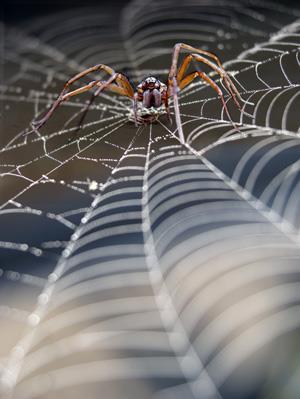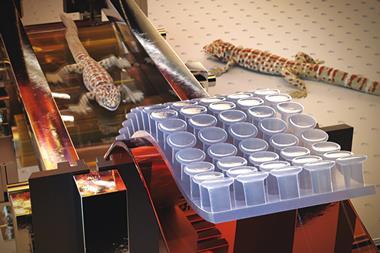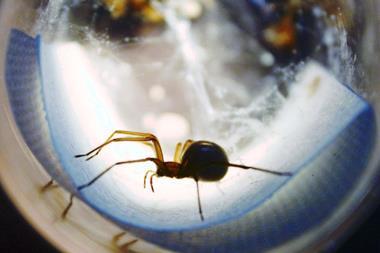Salt–protein mixture may explain why spider webs retain their adhesive properties in arid and humid climates

Scientists in the US may have untangled the reason why spiders’ webs remain sticky no matter how humid or arid their local environment is. A salt–protein mixture present in glue droplets along each thread may allow spiders to tune the stickiness of their webbing.
To find out why the adhesion of spiders’ webs is so adaptable, Gaurav Amarpuri and his colleagues at the University of Akron peeled the silk threads of five spider species off a glass substrate at varying relative humidity. For each thread, there is a humidity sweet spot where maximum adhesion occurs. Although this humidity is markedly different for each species, the viscosity is surprisingly similar at around 1000Pa/s.
The team postulate that varying levels of water-absorbent inorganic salts in the glue may be the reason for this adaptability, as the glue will be able to obtain more moisture in a dry atmosphere if more salt is present. The researchers also argue that including such salts in synthetic adhesives may open up the possibility of tuneable glues.
References
G Amarpuri et al,ACS Nano, 2015, DOI: 10.1021/acsnano.5b05658












No comments yet